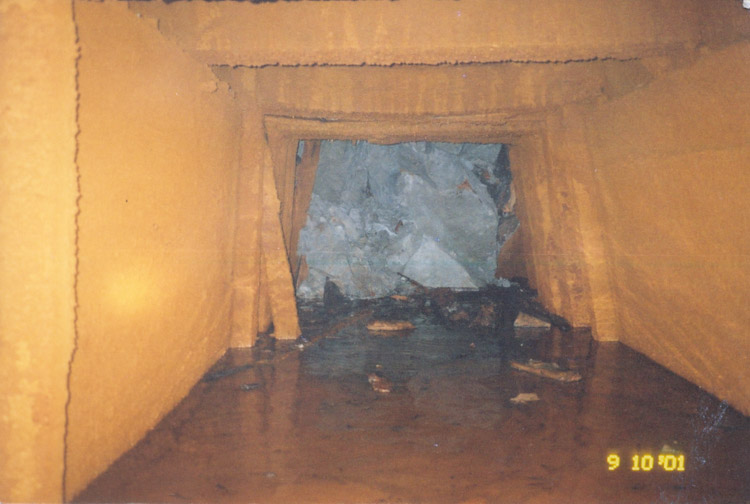Climax Mine – Water Tunnel Rehabilitation & Bulkhead Construction
Client: Climax Molybdenum Company, a sbusidiary of Phelps-Dodge
Location: Lake County, Colorado, United States
The Tenmile Tunnel is located on the Climax Mine property, near Leadville, CO. at an elevation of 11,000 feet. MES was responsible for extensive rehabilitation of over 5500 linear feet of 10’ x 10’ water tunnel, including spiling and steel setting to repair a severe collapse zone located under a tailings pond 200 feet above.
Activities included the extensive installation of ground control structures; underground blasting of oversize from cave; demolition blasting of 12′ thick concrete bulkhead; blasting keyway cutout for new bulkhead, construction of 18′ thick concrete bulkhead with high-pressure door large enough for an underground loader to pass through, and installation of drainpipes and automated valving.
This project also required MES to coordinate with other contractors at Climax to install new water decant structure from the surface to the underground via the installation of a new raise. MES was responsible for preparing the underground area for raise boring, transport of the raise bore cutterhead, and removal of the raise bore cuttings from the tunnel. MES’ underground work had to be closely coordinated with the raise boring and other work being performed for the owner by other contractors as part of the same project. The other contractors included: Schmueser, Yenter, Raisebore, Mountain Structures, Canberra.
Engineering functions for various parts of the work were provided by the Owner’s engineering department; MES internal staff; MES’s sub-consultant Dr. John Abel, P.E.; Rocky Mountain Consultants; and URS. MES used pre-placed (2″) piping through the bulkhead forms to pump the concrete to ensure that it was tight up to the top of the cavity cut-out above the bulkhead, then later used other pre-placed pipes (1″) to post-grout the concrete bulkhead perimeter after allowing two weeks for concrete shrinkage. This provided a tight seal at the floor, ribs, and back. This work began as an unplanned emergency repair in September 2001 and was completed through severe winter conditions at 11,000 feet in time for spring runoff in May 2002.

